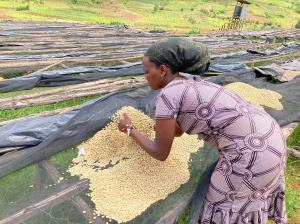HUCE welcomes incoming environmental fellows
The Harvard University Center for the Environment welcomes the incoming group of Environmental Fellows for the 2010-12 academic years. These four new fellows will join a group of five scholars who will be beginning the second year of their fellowships. Together, the Environmental Fellows at Harvard form a community of researchers with diverse backgrounds united by intellectual curiosity, top-quality scholarship, and a drive to understand some of the most important environmental challenges facing society.
Incoming Fellows:
Daniel A. Barber is an architectural historian analyzing affinities between the history of architecture and the emergence of environmentalism in the 20th century. As a Ziff Environmental Fellow, Barber will work with Charles Waldheim at the Graduate School of Design to pursue a research project that explores the multifaceted proliferation of climatic architectural strategies at mid-century, and in particular research on “thermal comfort”—the internal climatic conditions of the built environment. The project, tentatively titled, “The Invention of Thermal Comfort: Climate Science and the Globalization of Modern Architecture, 1933-1963,” reveals empirical and conceptual relationships between architectural research, climate science, and the global emergence of political, economic, and cultural concern for environmental conditions.
Elizabeth Landis is a materials chemist who is interested in applying surface chemistry to solar energy collection and storage. At the University of Wisconsin, Landis developed methods for attaching molecules to vertically aligned carbon nanofibers and studied the electronic properties of the resulting interfaces. This work demonstrated the suitability of the nanofibers for use in fuel cells and for energy storage. As a Henson Environmental Fellow, Landis will work with Cynthia Friend in the Department of Chemistry and Chemical Biology to study how surface layers of titanium dioxide can be doped to change and control the optical properties of the material, and ultimately be tuned to harvest solar energy.
Alexander (Zan) Stine is a climate scientist interested in how to separate natural climate variability from human-induced climate change in the observational record. As a Kernan Brothers Environmental Fellow, Stine will work with former Environmental Fellow (now assistant professor) Peter Huybers in the Department of Earth and Planetary Sciences to understand changes in the response of tree growth to temperature over the last century. Tree-ring records have long been used to infer the temperature history of the Earth before the advent of the thermometer. However, in later part of the 20th century many of these tree rings ceased to track temperature, suggesting a large-scale change in the way the terrestrial biosphere responds to climate, and calling into question tree-ring based reconstructions of past climates.
Rich Wildman is an environmental engineer whose interests also include chemistry and oceanography. As a French Environmental Fellow, Wildman will work with James Shine in the Harvard School of Public Health to study the transport, degradation, and toxicology of chemical contaminants during water reuse. Since reservoirs are the centerpiece of many water reuse strategies, Wildman will study the degradation and toxicology of trace organic pollutants in reservoirs that receive highly treated wastewater intended for future consumptive use.




